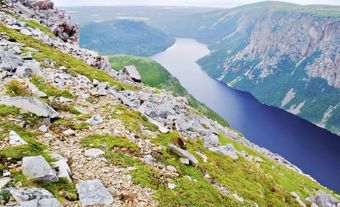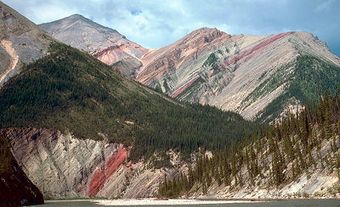The mountains are composed of faulted and folded sedimentary rock (sandstone, shale, conglomerates and some limestone) of latest Precambrian to Triassic age (600 to 205.7 million years ago). Some of the shales are a bright maroon colour. Sandstone and shale are host to major lead, zinc and silver deposits at Macmillan Pass in the centre of the range. There are numerous granites of Cretaceous age (144.2 to 65 million years ago), some of which are associated with tungsten (such as the mine that was at TUNGSTEN, NWT) and gold deposits.
The mountains are home to numerous large animals, including Dall sheep, moose, caribou and black and grizzly bears. The northern Selwyn Mountains include the headwaters of a number of rivers such as the Bonnet Plume, Stewart, Macmillan and Keele; the southern Selwyn Mountains include the headwaters of the Pelly and SOUTH NAHANNI rivers. Most rivers contain sport fish, including speckled and rainbow trout and arctic grayling. Lakes also have large lake trout.
The Selwyns were virtually unexplored and unmapped until after World War II. At present, hikers, naturalists, trappers, outfitters, hunters, fishermen and exploration geologists are seasonal visitors. The World War II CANOL PIPELINE intersects the mountains at Macmillan Pass. Most of the mountains can be climbed and walked without technical support and there are numerous horse and game trails in the valleys.

 Share on Facebook
Share on Facebook Share on X
Share on X Share by Email
Share by Email Share on Google Classroom
Share on Google Classroom


